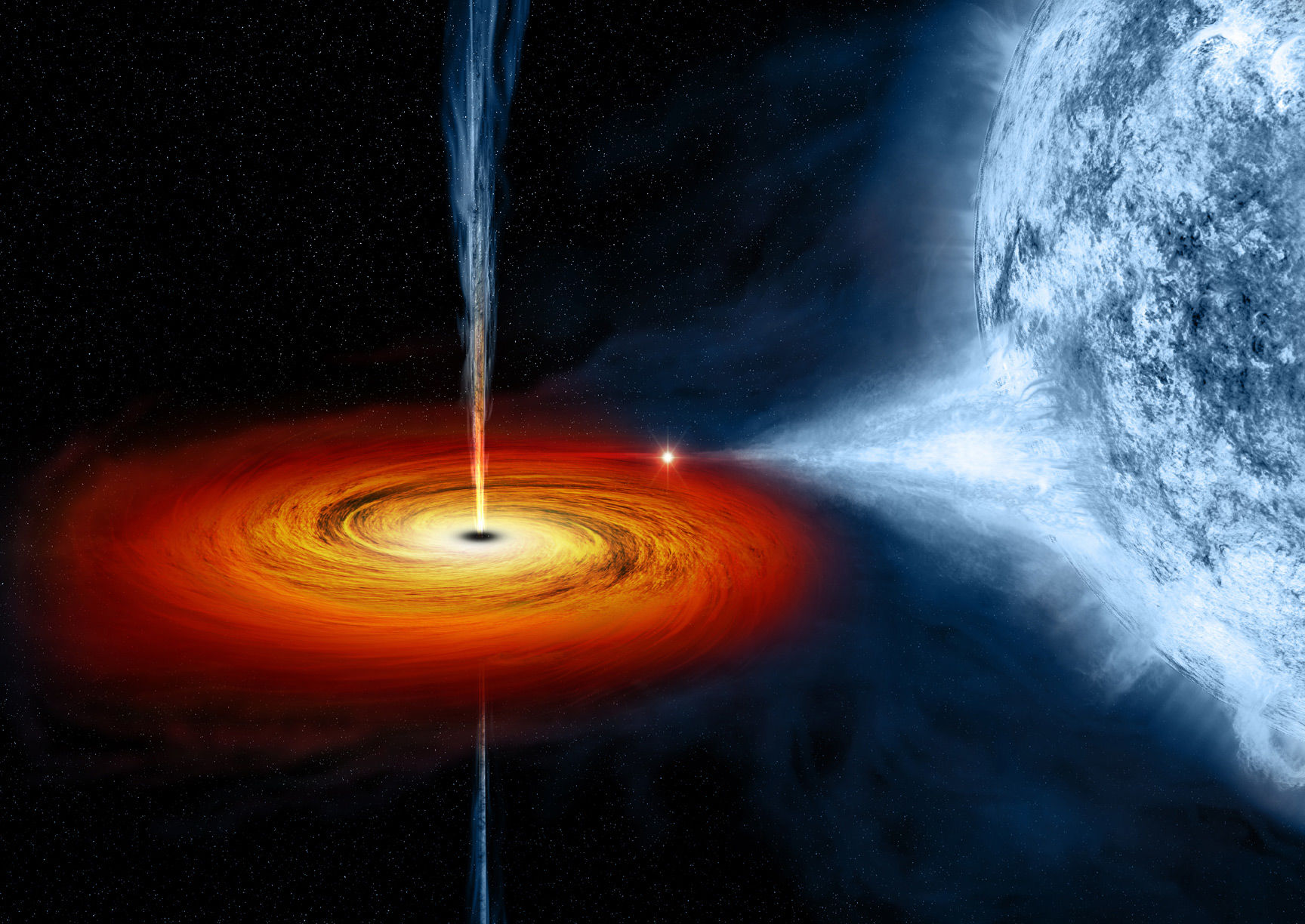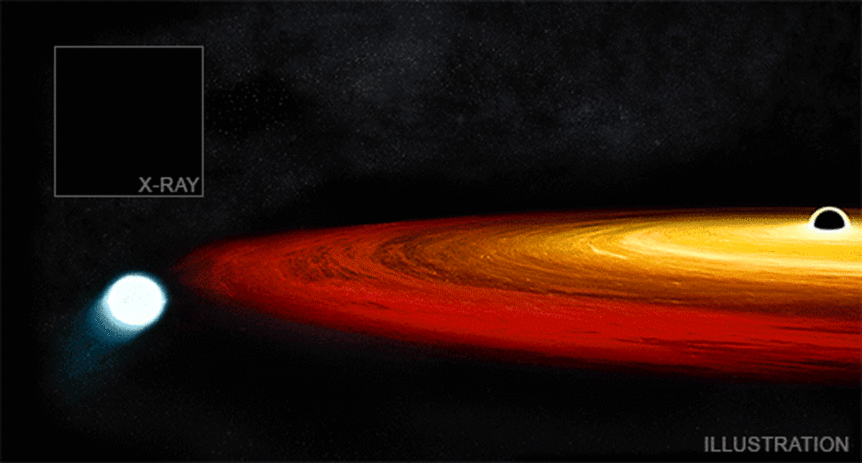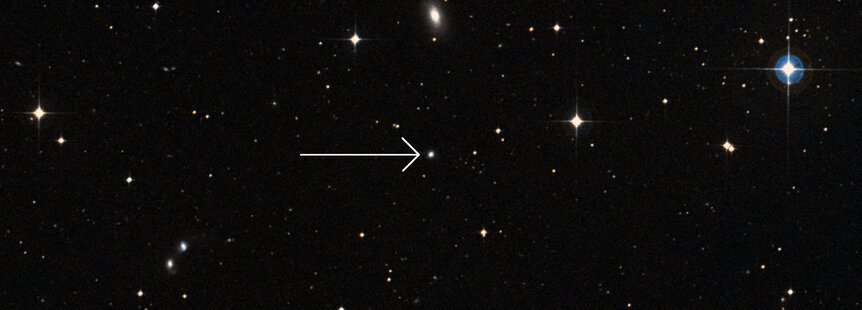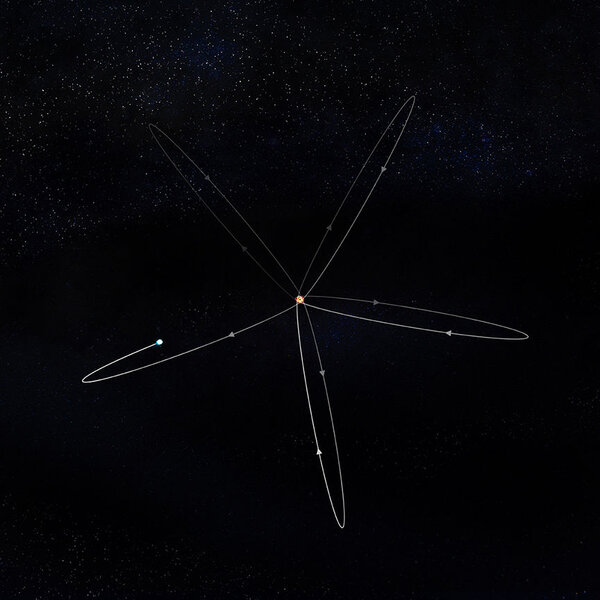Create a free profile to get unlimited access to exclusive videos, sweepstakes, and more!
A black hole is slowly eating the corpse of a dead star

Every time I think I've heard of every over-the-top bombastic cosmic event, the cosmos comes along and says, "Hold my beer."
So how about this: In a distant galaxy, a black hole is slowly eating the core of a dead star orbiting it, blasting out pants-wettingly enormous flares of X-rays every nine hours as the star has material ripped from its surface to fall into the black hole's maw.
Yeah? Got that?
The galaxy is prosaically called GSN 069, an active galaxy (meaning it emits a lot of high-energy radiation from its nucleus) about 250 million light years away. It has a supermassive black hole in its core, as most galaxies do, but weirdly this one is a bit of a lightweight at only 400,000 times the mass of the Sun. The one in the center of the Milky Way is considered to be small at ten times that mass, so this one is at the very low end of these beasts.
In 2019, astronomers reported that they were seeing flashes of X-rays coming from the galaxy, and they were pretty powerful: In X-rays alone they were emitting a billion times the Sun's total energy! That’s, um, a lot. And not only that, these flares were occurring on a fairly regular nine-hour period, lasting for about an hour. This galaxy was observed by the venerable ROSAT X-ray observatory in the mid-'90s, and the galaxy is now 240 times brighter than it was back then, though over the past decade they note the amount of X-rays has dropped smoothly.
This has the hallmarks of a tidal disruption event, when a star gets too close to a big black hole and gets torn apart. This releases a vast amount of energy, and it can last for years. However, the nine-hour period between one-hour-long flares seen in GSN 069 is weird; usually you just see one long massive blast of X-rays. This periodicity implies an object that didn't just get torn apart, but instead survived an encounter with the black hole and is now orbiting it.
Analyzing the orbit and the flares, an astronomer has just published an interesting interpretation of what's going on: He thinks there's a white dwarf orbiting the black hole on a deeply elliptical path, taking it very close to the black hole every nine hours. The intense gravity is ripping material off the white dwarf's surface, which then crashes into a disk of material already piled up outside the event horizon, creating the X-ray flares.
That's … apocalyptic. I mean, you have to understand what's going on here.
In his scenario, the star started off as a star much like the Sun, but reached the end of its life. As it ran out of hydrogen in its core to fuse into helium, it puffed up into a red giant: a cooler, swollen star a dozen times bigger than the Sun. The problem is, it had the misfortune to reach this stage of its life right as it was falling into the center of the galaxy where the black hole sits.
As it approached the black hole, the intense gravity tore a huge amount of the star's outer layers away, which then fell onto the black hole. This sort of encounter can rob the star of a lot of its energy of motion, and it winds up being captured into orbit instead of just continuing to pass on by. An orbit like this is typically highly elongated, so the star would drop down very close to the black hole, then move back up away from it. But every time it got close more of its material was lost to the ceaseless hunger it faced.
Eventually, all that was left was the red giant's core, a hot, small (roughly Earth-sized) ball of extremely dense helium with very roughly the mass of the Sun: a white dwarf. The surface gravity of a white dwarf is incredible, hundreds of thousands of times Earth's gravity. Yet even then the black hole is stronger. Every nine hours the orbit drops it down to within 20 million kilometers of the black hole's Point of No Return, and the gravity is so ridiculously huge it can still pull matter off the white dwarf's surface! It’s this stuff that slams into the disk of material orbiting right above the black hole, called the accretion disk, making the X-rays.
Over time, the black hole has nibbled away at so much of the white dwarf that it now only has a mass of about 1/5th the Sun. This whole process is pretty fast; the star may have been first captured only about 2,000 years ago. As it loses mass the orbit of the star gets more circular and moves away from the black hole; over time the rate at which the black hole eats it drops. That's not enough to save what's left of the white dwarf, though; it will emit gravitational waves, ripples in the fabric of spacetime that will once again drop it toward the black hole. I don’t know how long that will take, but I'd guess that in a few billion years that white dwarf is gonna have a bad day.
This hypothesis is interesting but not proven. However, it does make a prediction: As the white dwarf skims past the black hole every nine hours, its orbit changes orientation rapidly. This is called precession (I describe it in detail in a recent article about a star orbiting the Milky Way's big black hole), and the net effect is the path of the white dwarf traces out a rosette shape over the course of about two days. This should imprint a two-day variation in the X-ray flares that can be observable. If this is actually seen it would be convincing evidence this whole scenario is correct.
This sort of near-miss black hole encounter to capture a star and slowly eat it to death should actually be more common than complete tidal disruption. The reason this is the first time it's possibly been seen is that completely ripping a star to shreds releases a lot more energy, so it can be seen to vastly farther distance. This may be going on in many galaxies around us, but we just haven't been able to detect it yet. That's another fun prediction here, too.
The Universe is terrifying. But also extremely cool. Such a weird and wondrous event, and here it is, possibly actually happening. The cosmos is amazing, and has a lot of tools to make the bizarre an everyday occurrence.






























